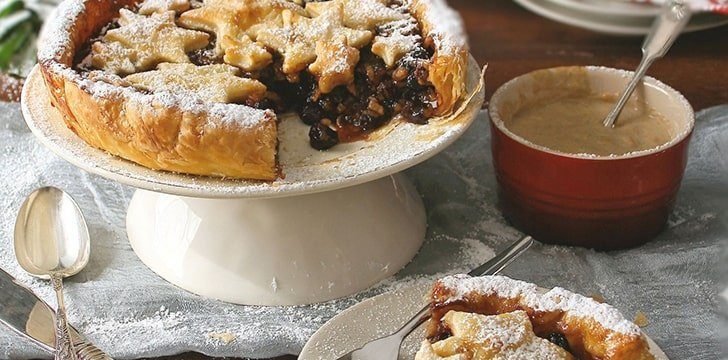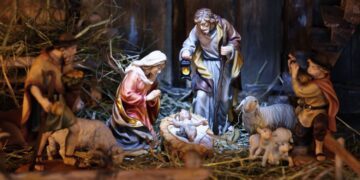The mince pie is a wonderful Christmas staple whether it’s topped with a circle of fondant, a sprinkling of crumble, or simply a pastry star.
Mince pies are a symbol of seasonal cheer; you can enjoy it with a healthy dollop of brandy cream and a glass of mulled wine.
But where do mince pies come from?
That’s what we’re here to find out today.
To us today a mince pie is something constructed of well-known ingredients including pastry, suet, dried fruit, peel, and brandy – or other alcohol – but this has not always been the case.
Mince pie original fillings.

The original mince pie was filled with meat, such as lamb, and shaped like a manger to symbolize Christ as a child with a pastry blanket.
Later they were usually consumed by the rich during the 17th and 18th Centuries, who used them as an indication of status and wealth, as only those who could employ the best chefs could have these artistic pastries.
The first written mention of mince pies.

One of the first written mentions of mince pies was in 1390, in an English cookbook: A Forme of Cury – which was originally written on a scroll under the name “tartes of flesh”.
Although back then, mince pies had some unusual ingredients, like cheese and eggs.
This developed throughout the years gradually gaining more sweet items and losing the importance of meat.
The development of mince pies.

The biggest change happened during the mid-18th Century when the cookbooks showed recipes for the sweet mince pies as an alternative to the meaty variety that those of yesteryear were more accustomed to.
The inclusion of meat was provided as an option rather than a requirement.
By the 19th Century, the sweet pie won the nation over leading up to Christmas and has since become a staple of Christmas time & a tasty tradition many follow world-wide.
From then on further tweaks, developments, amendments, and sweetness levels were carried out until the final product became commonplace in the present day.
Did you know…

There is plenty of interesting facts beyond the history of the mince pie though, did you know that the word ‘mince’ actually derives the Latin ‘minutia’ which means smallness.
Also in Chicago during the era of prohibition, some store-bought mincemeat actually contained a staggering 14% alcohol content!
Mince pies have had many names over the years which doesn’t surprise anyone when they’ve been around as long as they have; they’ve been called shred pies, Christmas pies and mutton pies to name a few – and originally had a crust a few inches thick.
Many believe that the merry mince pie was explicitly banned by Oliver Cromwell during his reign and still is today, but in fact, is a myth.
Although banning many aspects of Christmas and other festivities, none of the laws set by him are still in force today.
One final thing to note – when spreading the cream atop your pies this year, did you know that it is considered by some very bad luck to cut a mince pie with a knife?
So there we have it, the Christmas must-have sweet treat was actually a meaty staple of the 14th Century and beyond.
One thing’s for sure though whether at Christmas or any time of the year – there’s nothing better than a nice warm mince pie… or three!


















